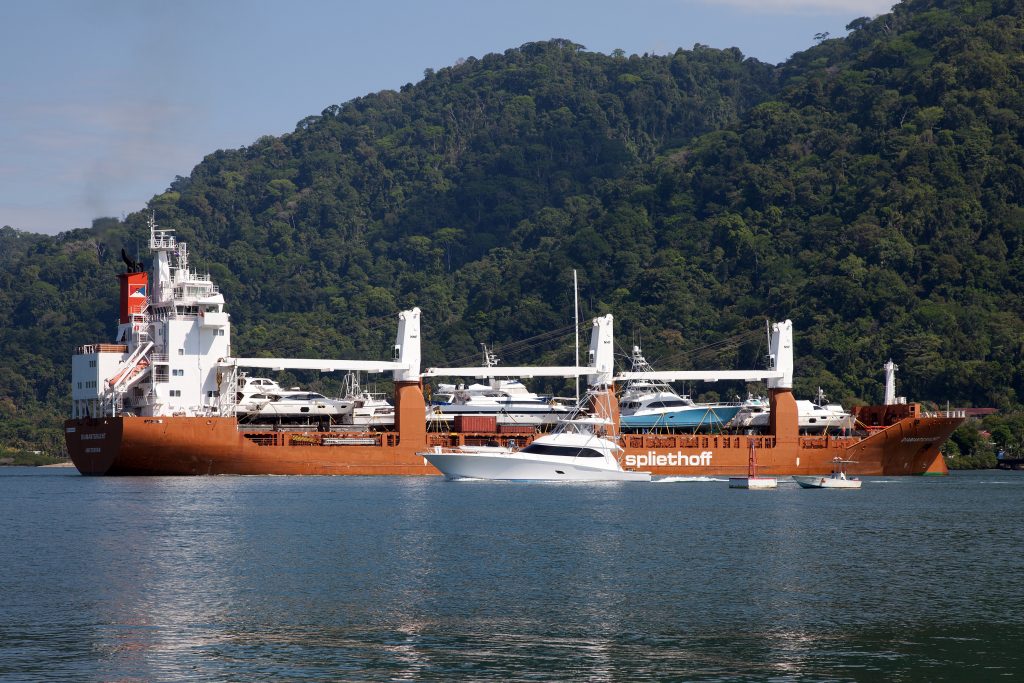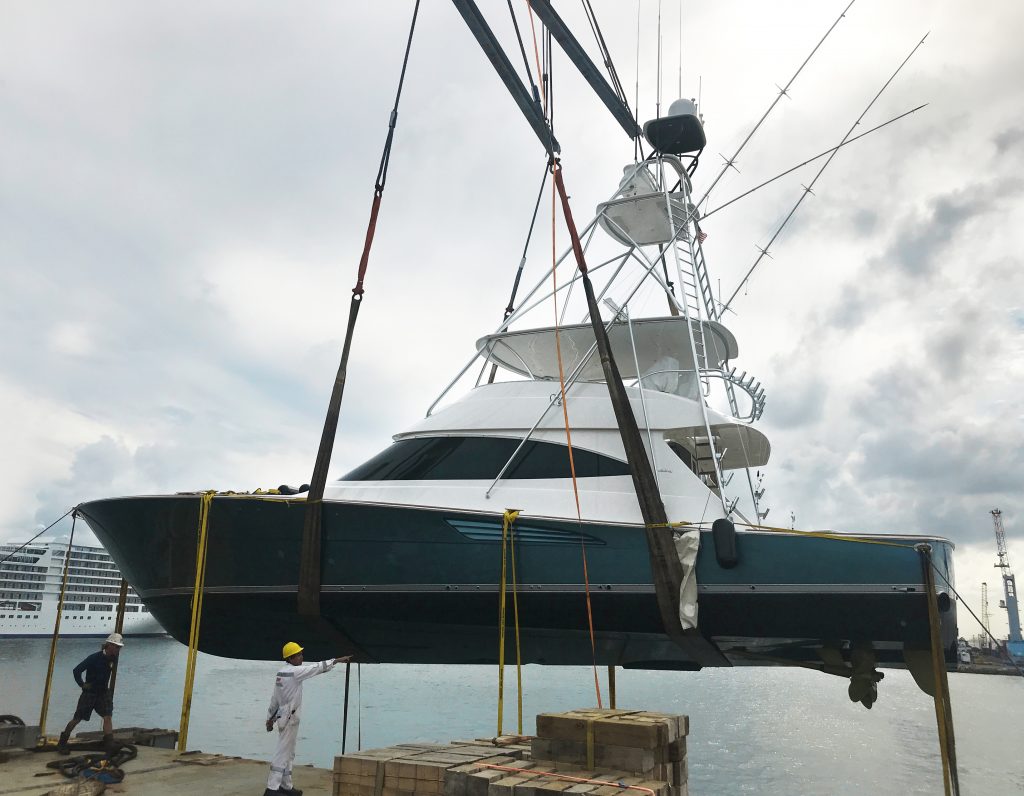Springtime in the world of sportfishing usually signifies a migration to warmer waters. We sat down with Lauren Hartman, Sales Manager for the East and West Coast Divisions of Sevenstar Yacht Transport, to discuss how transport services are making the migration process easier than ever for yacht owners.

Each year, Sevenstar transports approximately 1,500 vessels to more than 100 ports in 40 countries, and that number continues to grow. Within her seven-year tenure, Hartman says that she has helped to coordinate the transport of everything from jet-skis to a 60-meter luxury yacht
“No location is off limits,” says Hartman. “We can now transport boats of any size to practically any place in the world, subject to operational limitations.”
For yacht owners and crews who don’t have weeks to devote to a transatlantic voyage, yacht-shipping provides a faster, easier alternative. In addition to saving time, yacht-shipping also significantly mitigates the risk of wear and tear during an ocean voyage, saving precious engine hours and time spent on repairs and re-paints once the yacht reaches its destination.
Based in Palm Beach, Florida, Hartman is responsible for coordinating departures from the east and west coasts of the United States. She covers voyages from Palm Beach, Florida to Costa Rica, Mexico, and British Columbia. Aboard the shipping vessel, a voyage from Florida to Golfito, Costa Rica takes about seven days; a voyage from Florida to Ensenada, Mexico takes about two weeks.
In 2013 the Spliethoff Group strengthened Sevenstar’s presence in yacht transport with the addition of DYT Yacht Transport (formerly Dockwise Yacht Transport) and their fleet of submersible vessels. Once a year their float on-float off vessel makes a trip to some of the world’s most sought-after fishing locations.
So where are the fish biting now? Apparently, the Canary Islands and Cape Verde are currently two of the top destinations for incredible fishing.
For sportfishing yachts, Hartman says that Los Suenos, Costa Rica is still the most desirable destination, though Cabo, Mexico is growing in popularity as well. Sevenstar has also added a monthly voyage to Las Palmas, Spain from Savannah, Georgia. “Our cargo ships take this route on a regular basis so it’s very easy to accommodate a yacht or two and it has been popular,” says Hartman.

The Step-by-Step Process of Shipping Your Yacht Aboard a Submersible Vessel:
1. Client works with a Sevenstar representative to choose a ship date and destination. Hartman recommends booking at least three months in advance.
2. Sevenstar sends the client a check-list in order to gather preliminary information (photos, docking plans, vessel size, displacement weight, and value).
3. Once this information is gathered, Sevenstar sends the client a contract and insurance form. Yacht insurance policies will not cover the yacht during shipping, so cargo insurance is calculated into the Sevenstar’s pricing. The cargo insurance covers the yacht from the time the slings go on to the moment it is back in the water at its destination.
4. When the forms are returned and a down payment is made, the slot is considered reserved.
5. The compiled information for each yacht is sent to Sevenstar operations and one of the corresponding 20 load masters who are based throughout the world. Sevenstar begins creating custom-made cradles for each yacht.
6. A few days before the yacht ships, crews should secure the yacht to withstand up 70-knot winds (although it is not likely that the shipping vessel would encounter winds of this speed).
7. If the yacht will be connected to power aboard the shipping vessel, one crew member is required to ride along in the event that a problem does arise (such as breaker pop). This crew member may wash down the yacht or make repairs, but due to liability reasons, they are not permitted to stay aboard the yacht but rather within the cabin on the shipping vessel.
8. 24 hours before the ship date, Sevenstar gives each client a loading time and location (port or starboard).
9. For “float-on” loading, clients arrive at their scheduled times, and professional divers go in the water to secure the slings on each yacht. During this time the crew is permitted to shut things down aboard the ship.
10. Tender service delivers each crew back to shore where they have the opportunity to watch the yachts being lifted and secured before the vessel departs.
11. Clients are updated each Monday, Wednesday, and Friday throughout the voyage regarding the whereabouts of their vessels. Contact information for an agent at the destination port is relayed. Clients are also given the option of satellite tracking the shipping vessel via Marine Traffic’s website.
12. The “float-off” unloading process is similar to the “float-on”. At least 24-hours in advance, clients are given a time and location for their yacht unload. A team of divers along with a Sevenstar loadmaster, carefully unloads each yacht and the crew is delivered aboard via tender service.
